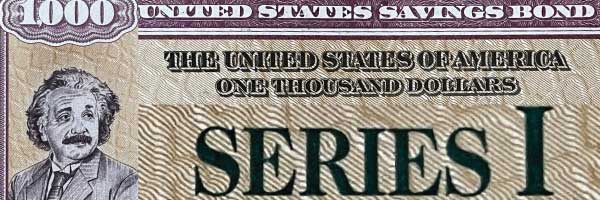Back in May 2021, I initially discussed the surprising merits of the humble U.S. Savings Bond in my post SAVINGS BONDS – INFLATION HEDGE SERIES. At that time, the Series I bond was paying 3.54%. Today, Series I Savings Bonds yield 9.6%.
These bonds are paying 9.62% annually for purchases through October 2022. This rate only applies to the first 6 months you own the bond. Every six months thereafter the rate resets.
Arguably, the simplest of all investments, U.S. Savings Bonds have outperformed most other investments over this period. Of course, that is not saying much, since most investments have lost a considerable amount so far this year.
This post will revisit the Series I Savings Bond.
How Do Savings Bonds Work?
The I-Series Savings Bond return is “based upon a combination of a fixed rate of return and a variable semiannual rate.” Series I Savings Bonds yield 9.6% today.
Like inflation-linked bonds, the variable semiannual rate is indexed to inflations. But the Treasury sets the fixed rate, and it stays the same for the life of the bond. The fixed rate has ranged from 0% to 0.5% over the past 10 years.
For bonds purchased today, the fixed rate is 0%.
On the first business day in May and on the first business day in November, the Treasury announces the inflation rate adjustment for the next 6 months. The current inflation rate adjustment is 9.62%.
To quote the Treasury website:
“An I bond earns interest monthly from the first day of the month in the issue date. The interest accrues (is added to the bond) until the bond reaches 30 years or you cash the bond, whichever comes first.
The interest is compounded semiannually. Every six months from the bond’s issue date, all interest the bond has earned in previous months is in the bond’s new principal value. Interest is earned on the new principal for the next six months.”
And remember, the United States Government guarantees this investment.
Limitations of Savings Bonds
As with all investments, there are disadvantages and limitations to be aware of. These limitations may dim the attractiveness of purchasing I-series Savings Bonds.
Annual purchase limits—each person is limited to purchasing $10,000 in I-series Savings Bonds each year (plus the option to purchase an additional $5,000 using your tax refund).
Low real returns—although the current yield is enticing, the inflation-adjusted return is very low (i.e., zero).
Must purchase directly from the Treasury—these are not marketable securities. You can only buy and redeem savings bonds via the TreasuryDirect website (although paper savings bonds can be cashed at some financial institutions).
No liquidity for the first year—you must hold savings bonds for at least 12 months.
Penalty for selling before 5 years—redeeming a savings bond between 1 year and 5 years after purchase, results in forfeiture of the last three months of interest payments.
Savings Bonds vs. TIPS
Series I Savings Bonds are probably most comparable to Treasury Inflation-Protected Securities (TIPS). The U.S. Federal government issues, and backs, both securities and both provide a return based on the inflation rate.
As discussed in my prior post, Are TIPS a Good Investment, TIPS are designed as an inflation hedge. Your return is fully protected from inflation since the bond’s principal (and hence your return) is adjusted based on actual inflation experienced. You receive a fixed, inflation-adjusted return, over the life of the bond.
A potential problem with TIPS is that they can trade at a negative yield. Instead of providing a fixed return above future inflation, they can trade at a fixed return below inflation. Locking in a negative real (inflation-adjusted) return.
For example, the auction of 5-year TIPS held in October 2021 resulted in a median yield of -1.75%.
Yes, you read that correctly, these TIPS sold at auction with a negative interest rate. Locking in a negative real return for bond holders of about 8.5% over their five-year term.
With interest rates and inflation rising dramatically this year, the base yield on TIPS is now positive. The June 2022 auction of 5-year TIPS resulted in a median yield of 0.3%.
Comparing to regular Treasuries, the 5-year notes auctioned in June 2022 resulted in a median yield of 3.2%. And remember, Series I Savings Bonds yield 9.6%.
Buying Savings Bonds Today
It is important to remember that when inflation eventually subsides, interest payments on Series I savings bonds will decrease. Potentially substantially. Back in November 2020, Series I savings bonds were paying under 1.7% (which still wasn’t bad compared to most savings accounts at the time).
But, as opposed to TIPS, the interest paid can never go below 0% regardless of how low inflation goes.
If you are considering buying TIPS, I would still consider buying the I-series Savings Bonds instead. It is hard to beat the 9.6% guaranteed annualized return for at least the first 6 months you own them.
Just understand that with the fixed component of Savings Bonds at 0%, you are giving up any hope for a meaningful real return. The real return is fixed a zero, but at least it is not negative. Which is more than you can say about most safe investments (i.e., bank accounts) today.
https://www.treasurydirect.gov/indiv/research/indepth/ibonds/res_ibonds_iratesandterms.htm
https://www.treasurydirect.gov/indiv/research/indepth/ibonds/res_ibonds_iredeem.htm



Share Your Thoughts